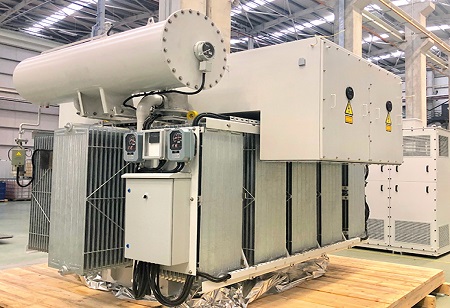
The energy sector is undergoing substantial changes. The sector is becoming more contemporary as a result of new technology, enhanced energy storage, and the utilization of renewable energy sources. The transformer, which increases and decreases the voltage of electricity going to clients, is a crucial component needed to supply energy to consumers. Millions of dollars have been spent by the sector to replace infrastructure and aged or obsolete equipment. No exemption applies to transformers.
Today's smart technology is developed enough to create intelligent transformers, which help with managing electrical distribution. The transformers of the future will be smart ones, and they will aid in other grid upgrading initiatives. Intelligent electronic device (IED) components and sensors are integrated into smart transformers to promote the modernization of the outdated energy system. The need for energy will rise along with the growth of the global population. How does the market for smart transformers look, and why is demand rising?
According to a recent report by Market Research Future, the smart transformers market would expand at a CAGR of 10% to reach $3.86 billion by 2027. While aging transmission and distribution infrastructure, technical advancement, and growing awareness of alternate energy sources are the three main drivers of the expansion of smart transformers, let us look at how smart transformers are revolutionizing the electrical grid.
Higher Efficiency & Remote Monitoring Capabilities
Smart transformers provide a number of important advantages, one of which is the ability to remotely monitor business activities, which increases energy security. Users may keep an eye on smart transformers and make adjustments as necessary to improve their performance. Transformers with remote monitoring capabilities are also made to autonomously control the voltage continuously.
A widely desired function for many pieces of equipment is remote monitoring. Utility firms would be free to concentrate on other crucial modernization activities, including improving energy storage systems, switching to renewable energy sources, or utilizing other cutting-edge technology to integrate into the grid, by replacing outdated transformers with smart ones.
For grid modernization and the industry's transition to a sustainable, clean energy future, energy-efficient industrial equipment is essential. You might be astonished to find that building activities use more than 40% of the country's energy. End users can utilize less energy resources by adopting energy-efficient devices and machinery, such as transformers.
Improved air quality & Cost-effectiveness
Traditional power plants use less fossil fuel when the grid is more effective, which minimizes pollutants and raises the standard of the air in urban areas.
Many homes and businesses lose power when a transformer blows, going without energy for hours or even days at a time. Transformers with intelligence can take over operations, better route electricity to prevent this, and compensate for nearby broken components. They also endure longer, improving the reliability of the grid.
In order to control expenses in these uncertain economic times, large commercial facilities adopting intelligent transformers would be advantageous. Long-term financial savings come from making sizable upfront expenditures in new technology, such as transformers or other gadgets, because doing so lowers maintenance costs and removes the need for further updates.
Protection from power fluctuations
Smart transformers also operate as voltage regulators and rapidly react to changes in the electrical system, which is another benefit. Companies may guarantee that the transformer's optimal voltage is maintained by using this type of control.
The benefits mentioned above offer a glimpse into the appeal of smart transformers and show why there is a developing need for them.
Save maintenance costs & postpone capital expenditures
Digital monitoring is already being used more and more in transformers. A central clearing house is receiving real-time transmissions of critical information including temperature, pressure, and vacuum levels. Many transformer producers are investing in developing online monitoring tools and diagnostic services in response to the rising demand for them, particularly for step-up transmission high-voltage transformers. These innovations are essential for increasing grid dependability and assisting utilities in preventing transformer failures and the ensuing blackouts. By increasing a transformer's usable life, they will also save maintenance costs and postpone capital expenditures.
Green & Energy-efficient transformers
Demand for energy-efficient transformers has increased as a result of efforts to lower the industry's carbon impact. The adoption of energy-efficient technology and the creation of new standards are priorities for both developed and developing nations. The need for environmentally friendly transformers made of biodegradable components such as ester fluids has increased as a result of the public's rising environmental concern. Esters can be used to fill transformers since they have greater flash points than mineral oil. This offers protection against flames, which are frequent in traditional transformers. Additional characteristics of green transformers include hermetically sealed tanks, decreased noise levels, and decreased losses. Their adoption is anticipated to pick up speed soon as utilities look for safe and secure solutions, particularly in densely populated metropolitan regions.
Future power systems will have tremendous demands, and smart transformers are clever enough to satisfy those demands. Conventional off-load and on-load tap changer transformers struggle to address a number of distribution network and smart grid operational issues; among the benefits of smart transformers are their ability to reduce grid losses and improve power quality and supply reliability.
We use cookies to ensure you get the best experience on our website. Read more...